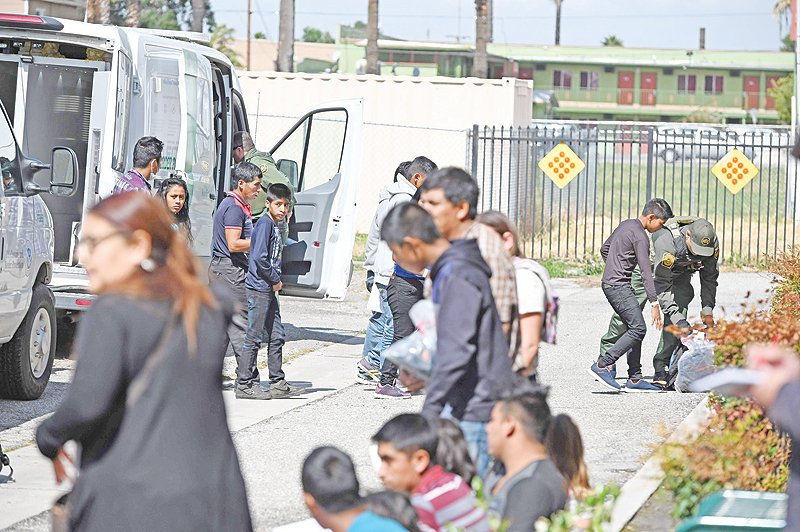SAN BERNARDINO, California: The three white vans bearing the Border Patrol logo slowly make their way into a back alley next to the Greyhound bus station in the city of San Bernardino, east of Los Angeles. As the agents slide open the doors, a group of 36 haggard-looking men, women and children -most of them from Guatemala - exit the vehicles carrying plastic bags filled with their meager belongings. They line up on a sidewalk as their names are checked by a representative from a local NGO who also enquires about their health.
A man asks where he can rent a phone and one of the agents sternly answers back in Spanish. "You decided to come this way into the US, you figure out what to do," the agent says. "What do you expect? You want me to give you my house?" Though clearly anxious about this next phase in their long journey to the US, the faces of the migrants show their relief at having made it so far. The group is part of thousands being dropped off at bus stations in California and other states by US Border Patrol as the agency deals with an influx of migrants crossing the border with Mexico and filling detention facilities to capacity.
System at breaking point
After staying at a local shelter or church in San Bernardino, the migrants typically head to other states to join relatives or friends pending the outcome of their asylum application. According to immigration authorities, more than 40,000 immigrant families apprehended at the border since March 19 and with no known criminal record have been released into the United States due to Border Patrol facilities being swamped.
"Whenever possible, the releases have been coordinated with local non-governmental organizations (NGOs)," US Border Patrol said in a statement to AFP. "As NGOs have reached their capacities, CBP has released family units at transportation hubs during daylight hours when the weather does not endanger those released."
Nearly 250,000 unaccompanied children or people traveling with family members were apprehended at the border in April alone, officials said, as opposed to some 59,000 in April of last year - a 400 percent increase. US President Donald Trump has reacted with fury at the crisis, threatening to shut down the border and accusing asylum seekers of trying to gain entry into the US under false pretenses. The asylum seekers are mainly from Honduras, Guatemala and El Salvador, countries beset by crushing poverty and gang violence.
The current surge in asylum seekers mainly concerns people from Guatemala. "Despite everything, they feel absolute freedom, they feel they were born again," said Homero Lobato, of the Immigrant Immediate Response Network, an NGO assisting the migrants. Jennaya Dunlap, of the Immigration Justice Coalition, another NGO, said nearly all of the asylum seekers don't speak English, are poor and have no clue on arrival as to where they are or the next step to take.
"The first thing they ask us is, 'Where are we? What region is this?' And they try to figure out the state they are in by looking at license plates," said Dunlap, who greeted the group of 36 migrants at the San Bernardino bus station this week. "Welcome," she tells the group as they exit the Border Patrol vans as volunteers hand them water and granola bars. "Don't worry, we are going to help you."
Lurking nearby, however, is an example of what await some of the migrants in a country deeply divided on the immigration crisis. "Send them back to Tijuana (Mexico)," shouts a white bearded man in a red pick-up truck as he drives by the group of migrants at the bus station in San Bernardino. "Or better yet, send them to (liberal) San Francisco," he adds. - AFP











